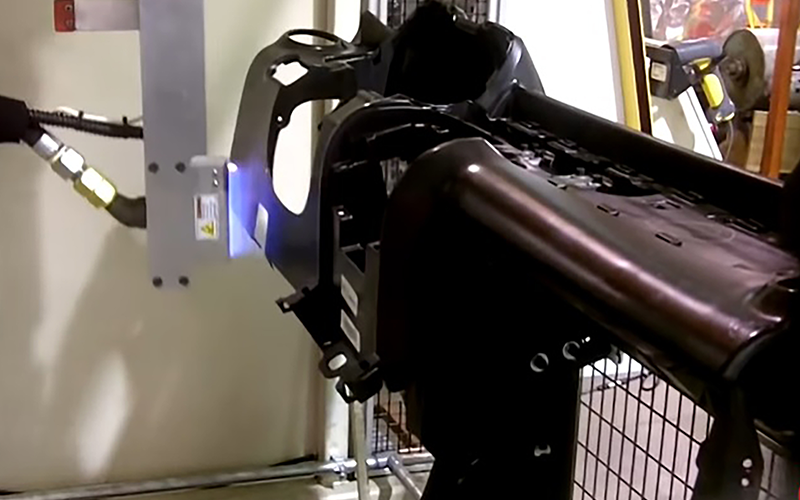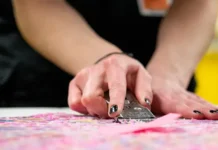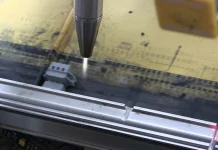Plastics Decorating
When it comes to surface treatment for plastic applications, it is important to be informed of the various technologies available and which is the best for a given project. Plastics Decorating recently sat down with Director of Business Development at Enercon Industries Wilson Lee to discuss the different pretreatment technologies and when/where they are most appropriate.
What is the difference between corona vs. plasma surface pretreatment technologies?
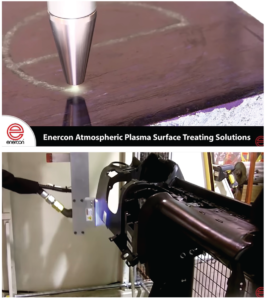
Plasma is ionized gas and commonly referred to as the fourth state of matter. The gas can be from natural air in a room, supplied compressed air or a supplied gas or combination of gases. Corona treaters typically ionize natural air, and corona is, in fact, a form of plasma. Plasma treaters typically ionize either compressed air or a noble gas chemistry.
Corona has a lower ion density than atmospheric plasma. This means that fewer functional groups, mostly Hydroxyl groups, are added to the surface. However, both technologies are effective at increasing the surface energy to promote bonding with inks, adhesives and coatings.
Manufacturers convert raw electrical power into corona or plasma by using different power supply configurations, electrodes and discharge configurations to meet the needs of each application. For example, there are different designs for implementing corona and plasma for films than there are for treating dimensional surfaces.
How do different industries identify pretreatment technologies?
This is a good question. Enercon sees a marked difference in how people in the film converting industry refer to these technologies vs. people dealing with dimensional objects for decorating and bonding.
In the film industry where webs are unwound and treated, the term “corona” is used for systems that simply ionize atmospheric air. The term “plasma” in this industry is reserved for systems that introduce gas chemistry to the treatment process.
Meanwhile, industries that are decorating, printing or bonding dimensional objects use the term “plasma” interchangeably regardless of whether the technology is using atmospheric air or gas chemistry. We suspect this has happened over time as early treaters manufactured 25 years ago for these object applications were limited in their effectiveness. Today’s treaters are far superior, and the term “plasma” helps distinguish them from their early predecessors.
What is the difference between blown arc and blow ion technology?
Within the air plasma family are two primary categories: blown-arc technology and blown-ion technology. Blown-arc systems are most similar to corona treaters.
Blown-arc air plasma is formed by blowing atmospheric air past two high-voltage power electrodes. The electrical discharge positively charges the ion particles surrounding it. Through direct contact, these particles positively charge the treated area of the object’s surface. This makes the surface more receptive to any applied substance, such as inks. The discharge looks similar to the discharge that might be seen on a standard corona treater used in the film converting industry.
Blown-ion air plasma systems push pressurized air past a single electrode, which discharges inside the treater head. The electrode creates positively charged ions in the surrounding air particles. The air pressure forces the air particles to accelerate off the tip of the head as a high-velocity stream of charged ions is directed toward the substrate surface. Through direct contact, these particles clean and activate the object’s surface, increasing its surface energy and making it more receptive to inks and coatings.
Generally speaking, blown-ion air plasma systems offer greater treatment results than blown-arc air plasma.
What recommendations are there when selecting the exact type of surface pretreatment technology?
Every surface has small variables in material makeup that may affect the final products. Materials from different manufacturers have different surface energies. Even materials from the same manufacturer will vary.
When selecting which type of surface pretreatment technology is best, the application is the first step. Important application variables are the types of material being treated, the area being treated, the cycle time, the end goal, the type of process (ink, adhesive, etc.) and the implementation (automated, robotic, etc.) Once the application variables are determined, the type of surface treatment will be decided.
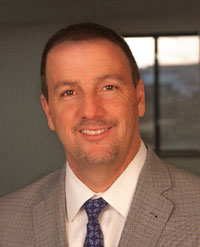 As director of business development for Enercon Industries Corporation, Wilson Lee uses his technical and business expertise to advance plasma and flame surface treating technologies for use in new applications and markets. Over the last 12 years, he has worked with a variety of surface modification technologies, including plasma, flame, low-pressure plasma, CO2 cleaning, Teflon dispersion and plasma deposition for plastics and composite materials. As an advocate of education, Lee has conducted training seminars for engineers on plasma and flame surface treating technologies and applications. In addition, Lee has spoken at numerous conferences and events about modern surface monitoring, surface testing, and bonding applications. For more information, visit www.enerconind.com.
As director of business development for Enercon Industries Corporation, Wilson Lee uses his technical and business expertise to advance plasma and flame surface treating technologies for use in new applications and markets. Over the last 12 years, he has worked with a variety of surface modification technologies, including plasma, flame, low-pressure plasma, CO2 cleaning, Teflon dispersion and plasma deposition for plastics and composite materials. As an advocate of education, Lee has conducted training seminars for engineers on plasma and flame surface treating technologies and applications. In addition, Lee has spoken at numerous conferences and events about modern surface monitoring, surface testing, and bonding applications. For more information, visit www.enerconind.com.

